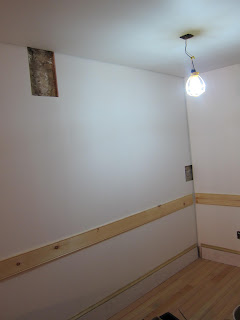Straight to the point, peeps, here’s the deal:
Lower East Tenement
Museum alongside 39 other hopefuls is fiercely competing for the Partners in Preservation ("PIP") prize of over $200,000 for restoration needs. Voting is 100% free!
Go
here.
Or
here.
Login with your Facebook or if you don’t have one (G-d bless your willpower to hold out) you can create a Partners in Preservation login.
Our Lady of Orchard Street (I am pretty sure no one else calls her that, but it's catchy) a.k.a 97 Orchard is up against the Guggenheim, Ellis Island and the Central Park Conservancy's Cleopatra's Needle.
'Cause that's fair. Yea, yea , life isn't fair, but this is a democracy!
You have a vote! In fact, you have one vote every single day until May 21! Votes= a voice and my voice wants to shout to the heavens why I love 97 Orchard.
 |
| Our Beloved Tenement |
Like all love stories, let's begin once upon a time...there was a man named Lucas Glockner. An immigrant himself, Lucas decided to enhance Kleindeutschland by building a home for immigrants on New York’s Lower East Side. It was one of many five story walk-ups that would become known as tenements and without giving away an entire tour here, the building that Lucas built in 1863 would become home to more than 7,000 immigrants from over 23 countries.
Jumping forward 72 years, 97 Orchard shut its doors to residents in 1935 for a variety of reasons and I’d love to tell you all of them when you come on a tour, but for now let’s just say that it was fate.
For in 1988, the co- founders of our museum, Ruth Abram and Anita Jacobsen happened upon a basement storefront that was “For Rent”. Little did they know that the apartments upstairs were sitting dormant save for one or two being used as storage. When that gem revealed itself, the Lower East Side Tenement Museum was born and with it, the preservation of a LES Tenement and the resurgence of contemporary tolerance for immigration through historical perspective because we are ALL immigrants. Yes, all of us.
Check out your family tree if you don't believe me.
Anywho- inside 97, different time periods have been preserved, restored and recreated throughout much of our beloved building, but on each floor, we've left one or more apartments in a state of ruin. We call them "the Ruin apartments" and it is they that need your help. You can see for yourselves in the pictures below.
 |
| A ruin apartment at 97 Orchard Street |
Check this out: In a ruin on the 4th floor- one of 97's tenants, Ruth Katz decided to write her name on the wall somewhere around 1930. Pretty sure that's priceless and worth saving.
 |
| Graffitti at 97 Orchard Street |
Fact: in addition to being Bowery Boogie's resident historian- for the past almost 6 years (holy moly) I have been an Educator at the Lower East Side Tenement Museum. Thus, the love affair. I LOVE IT HERE as do all of my fellow Educators. We do what we do because history matters. This place matters.
I'm writing to you simultaneously from the Tenement and Bowery Boogie because they are a match made by Lower East Side yenta and because I possess magical powers.
Fact: There are three other LES sites competing in PIP. If you spread out your voting we can mastermind an LES sweep and take top 4! Seriously, I'm good with that.
If you need some more inspiration and background as to why you need to VOTE for an LES site once a day (but mostly the Tenement) every day until May 21, I am happy to oblige.
Blogger Heather Clawson of
Habitually Chic was chosen as an ambassador by PIP. She says:
"Great architecture and old buildings are one of my big passions so when I was contacted by Partners in Preservation about becoming a blogger ambassador, I immediately said yes. American Express and The National Trust for Historic Preservation have come together for a community-based initiative to raise awareness of the importance of historic places... As part of my duties, I was asked to visit some sites and blog about them to help spread the word. When I looked at the list, my first choice of places to highlight was The Tenement Museum on the Lower East Side. It had been on my "to do" list for a while so this seemed like the perfect time to visit."
Heather, you got more pictures in one visit than I've managed to sneak (kidding) in my entire tenure. Nicely done! Time to share!
 |
| Image Courtesy Habitually Chic |
 |
| Image Courtesy Habitually Chic |
If you aren't yet grasping the gravity of why we need to preserve the ruin apartments let me put it to you this way: what would Greece be without its ruins? Italy? Turkey? Tombstone? (what? I totally went to college in Arizona, it counts).
 |
| Image Courtesy Habitually Chic |
Help us and we will help you back by continuing to offer tantalizing, educational, inspirational and passionate tours to you every single day (except Thanksgiving, Christmas and New Year's).
For the sweep, vote Henry Street Settlement, St. Mark's in-the-Bowery which I literally, just wrote about and DMAC (Duo Multicultural Arts Center on East. 4th)
Thank you in advance.
I know you won't let us down--and by us I mean the Tenement Museum and the Lower East Side.
Bless up!
--
Posted by Educator Allison B. Siegel



















